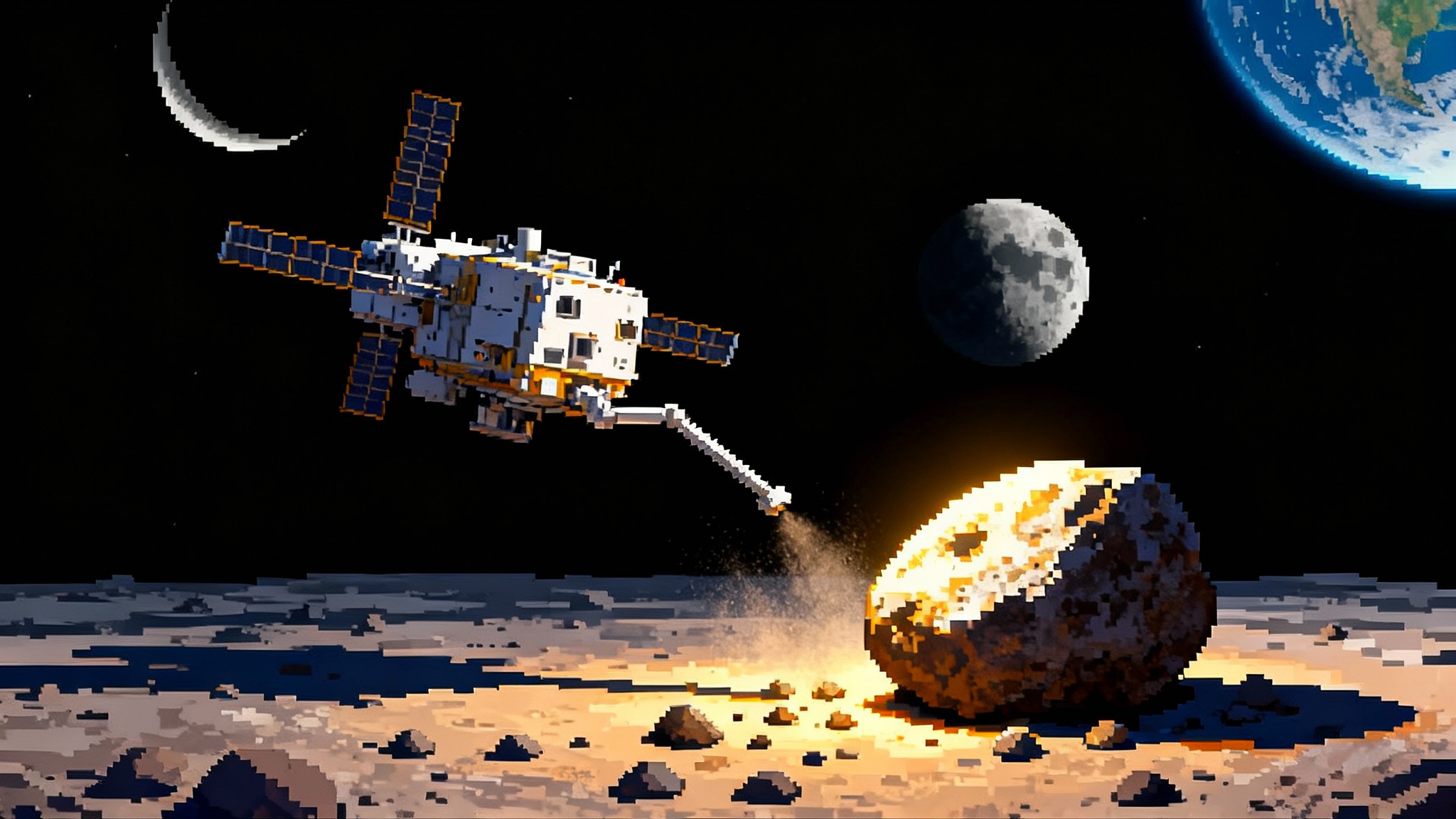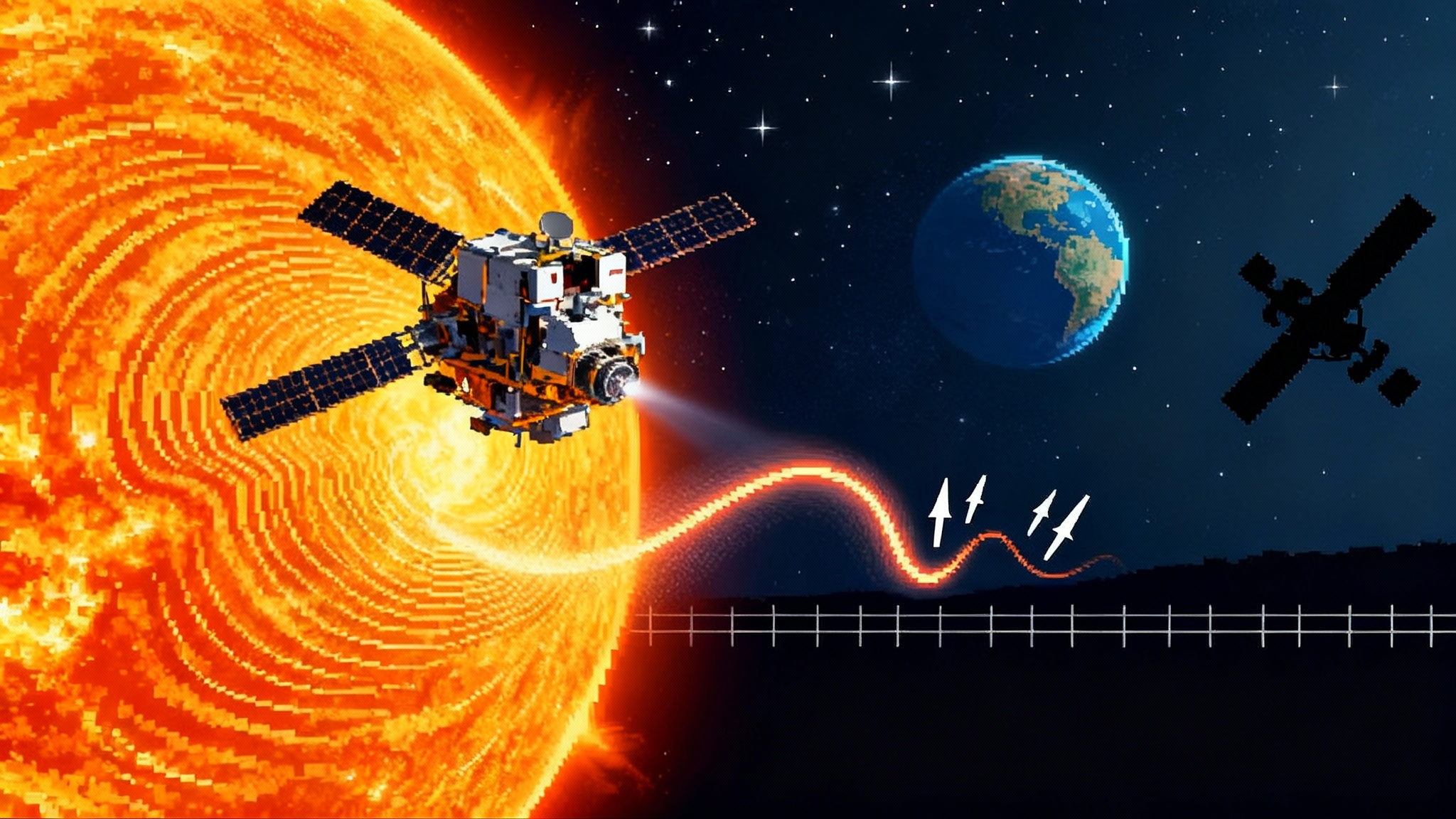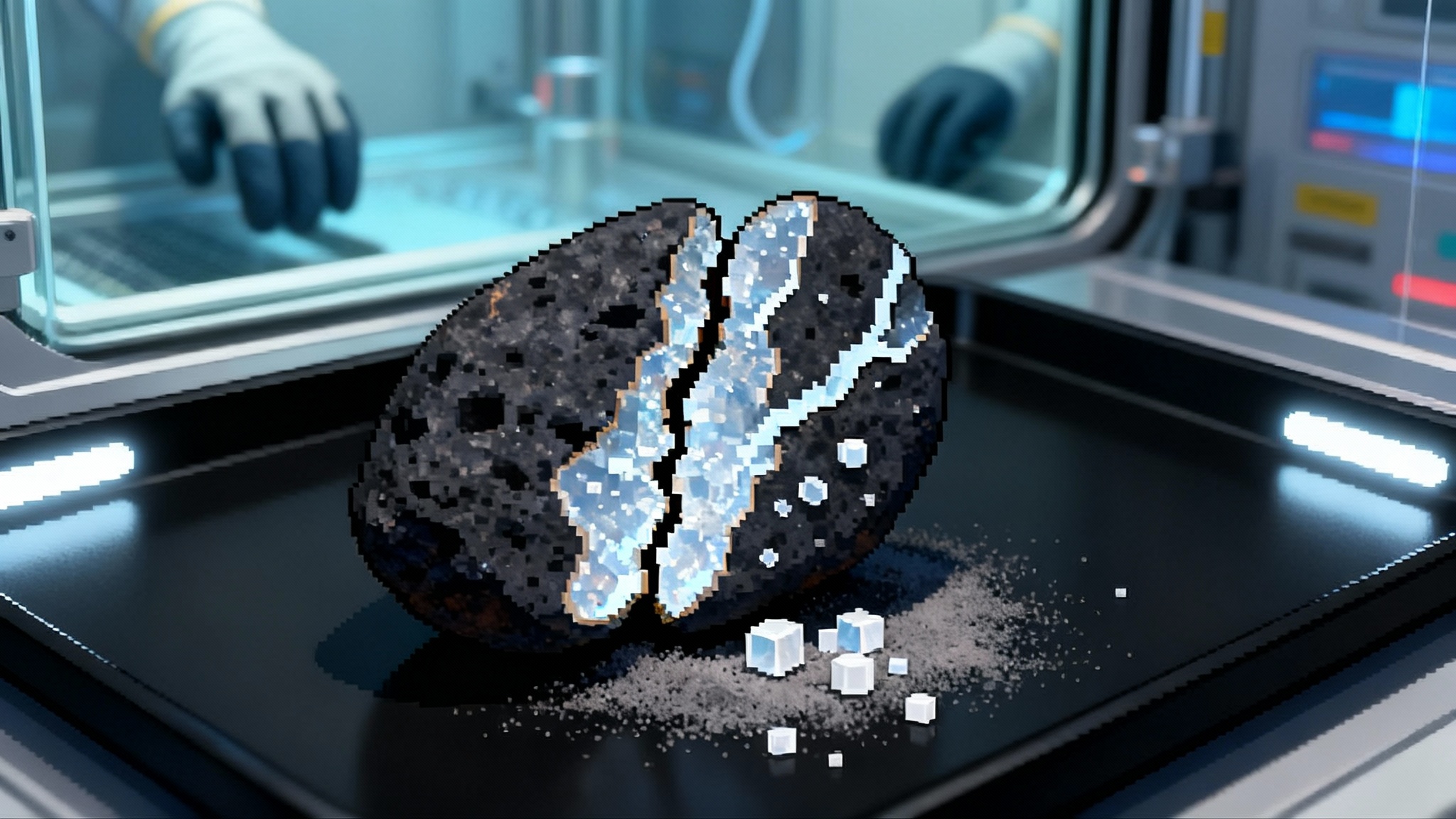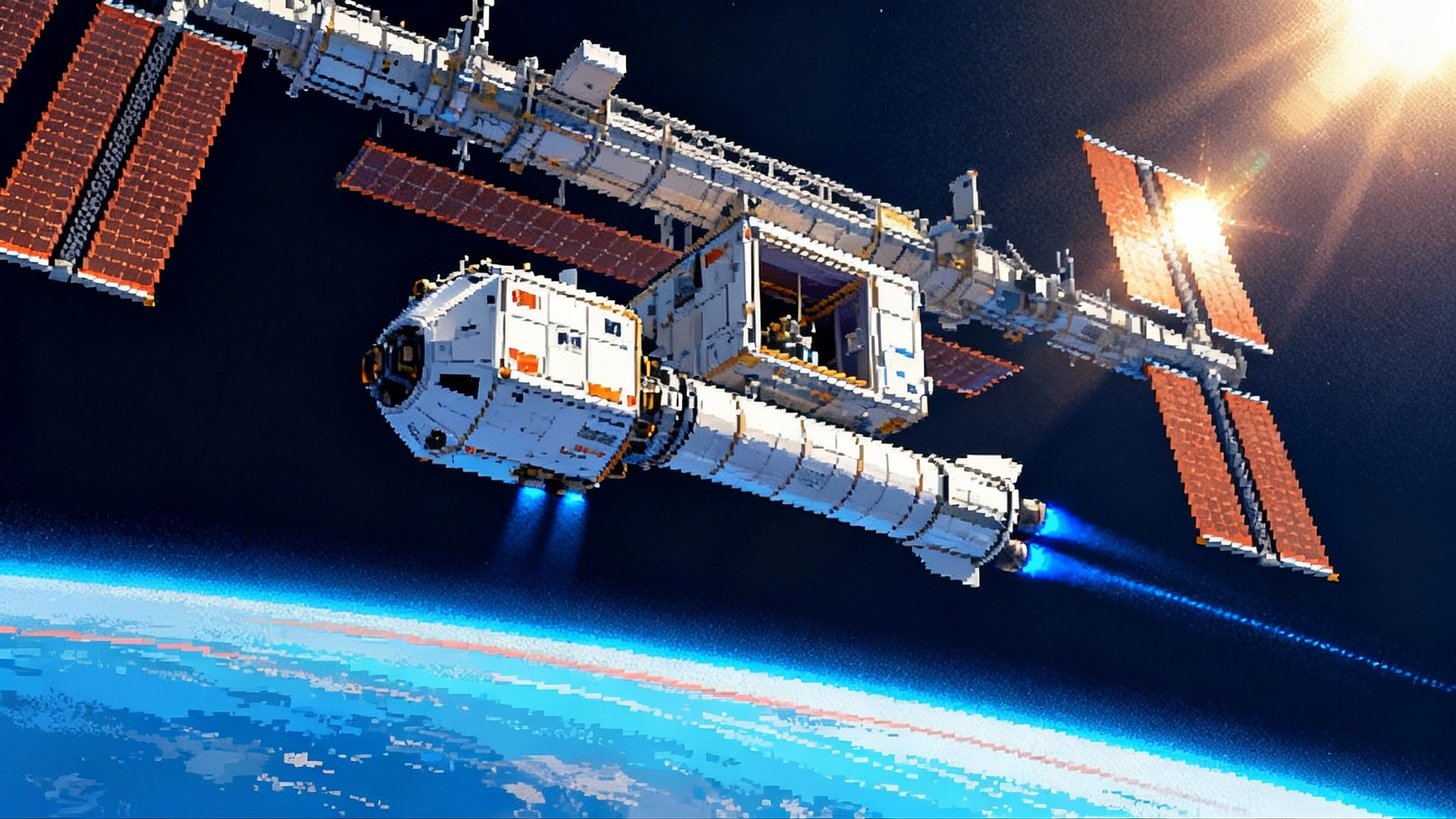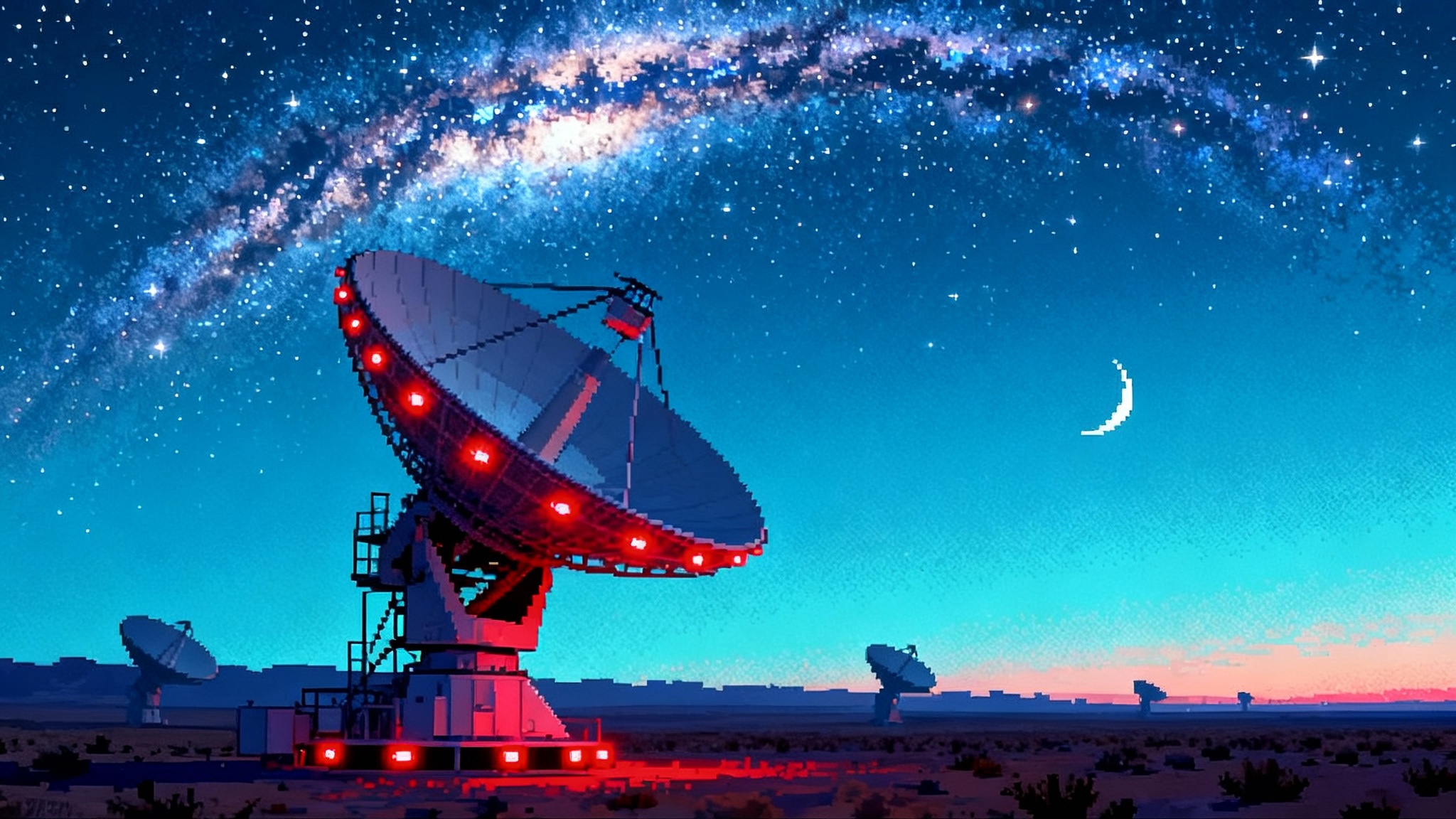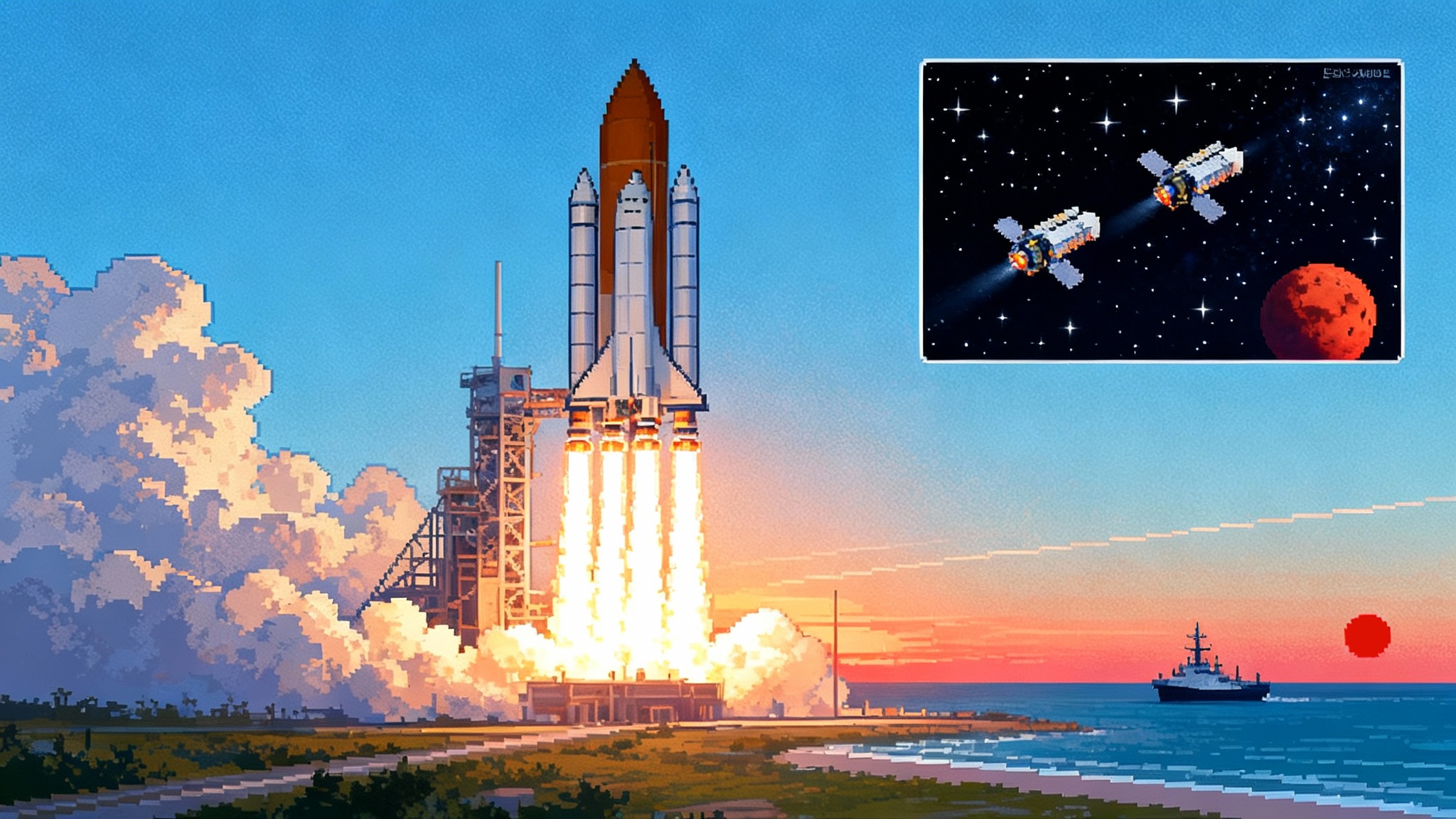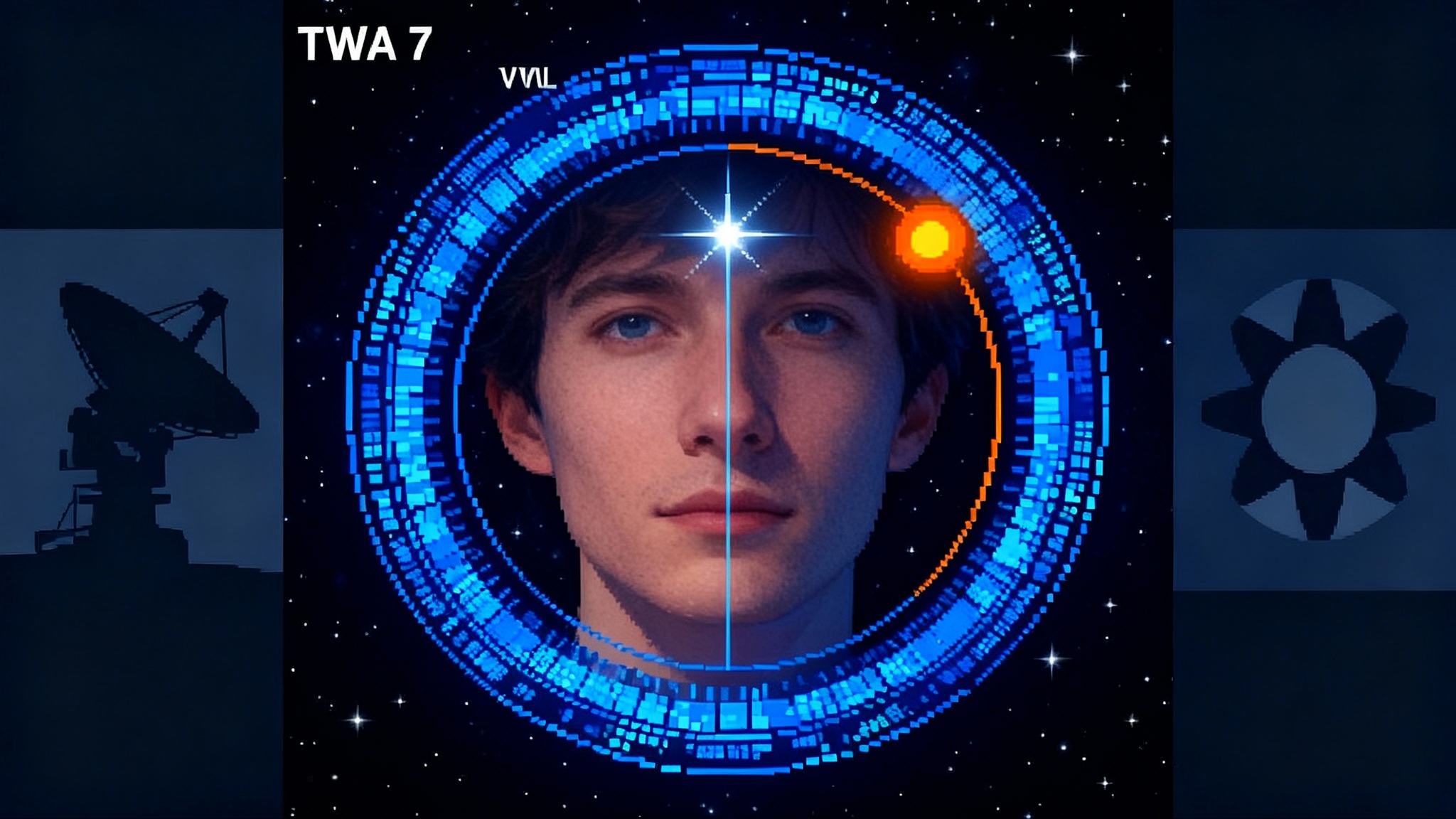IMAP to L1: The mission to map the heliosphere’s edge
With Solar Cycle 25 surging, NASA’s IMAP heads for the Sun-Earth L1 point to image the heliosphere in 3D while SWFO‑L1 delivers earlier, more reliable space weather alerts.
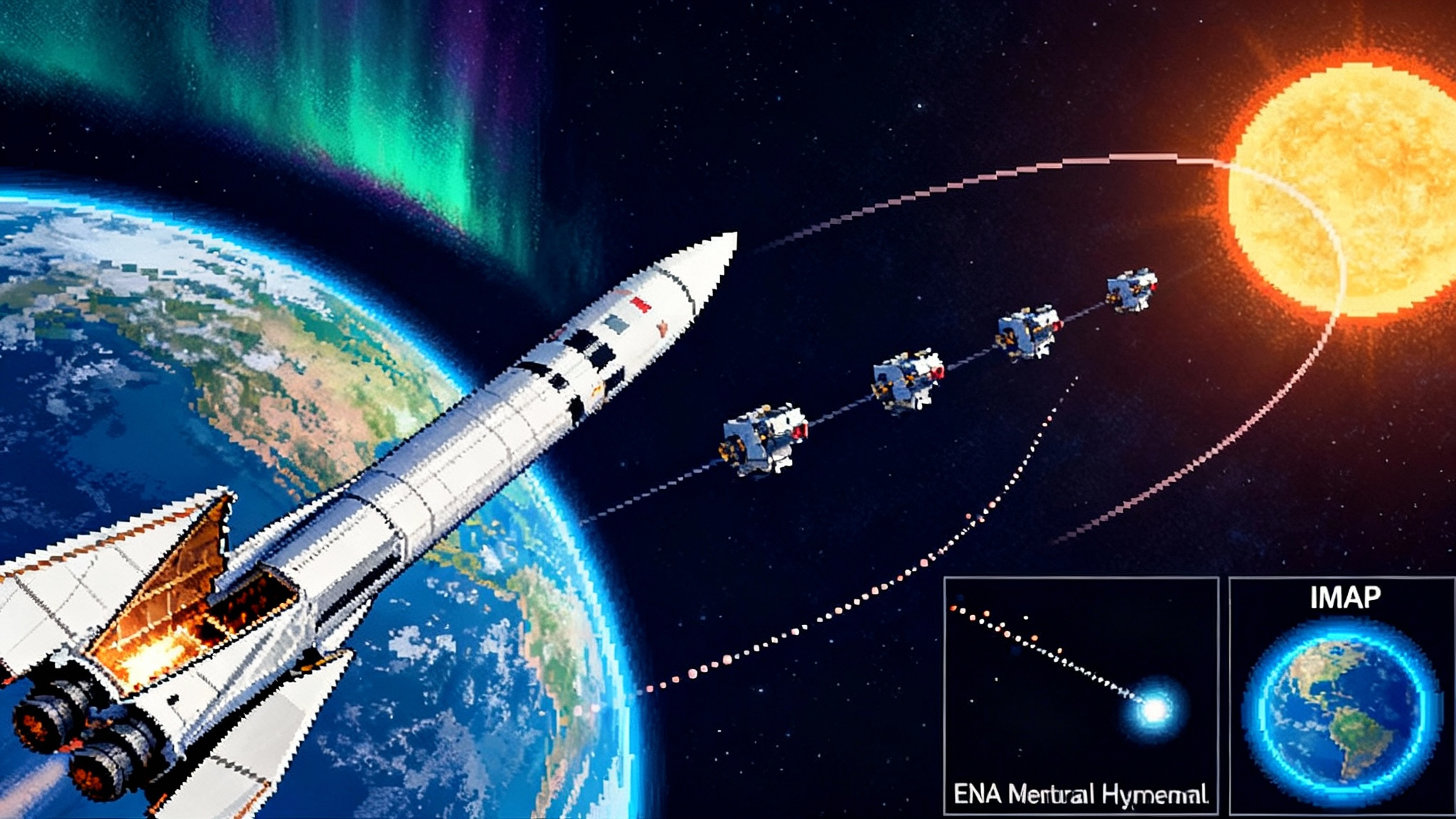
Why this launch matters now
A single rocket will try to answer one of space physics’ biggest open questions: what does the edge of our solar system actually look like. NASA’s Interstellar Mapping and Acceleration Probe, or IMAP, is set to launch with two companions toward the Sun-Earth L1 point, about a million miles sunward of Earth, on Tuesday, Sept. 23, at 7:32 a.m. Eastern, according to the agency’s NASA launch coverage advisory. The timing could not be better. Solar Cycle 25 is still running hot, which raises the odds of solar storms that affect power grids, satellites, and crewed missions. IMAP’s science thrives on that activity, and one of its rideshares will help watch for trouble in real time.
At L1, IMAP will swing into a halo orbit and spend at least two years imaging the faint neutral atoms that leak back from the heliosphere’s outer boundary. Those images should reveal the system’s true shape, test theories for how cosmic rays are accelerated, and probe the most puzzling feature discovered by IMAP’s predecessor IBEX, the all-sky ribbon of neutral atoms that arcs across the sky.
The trio on board
This is a three-spacecraft ride with complementary jobs.
- IMAP is the primary science payload. It carries ten instruments tuned to map energetic neutral atoms, measure the solar wind and pickup ions, and sample interstellar dust. IMAP’s ENA cameras will produce global sky maps every few months, with much higher sensitivity and resolution than IBEX.
- SWFO-L1, a NOAA satellite riding along, is an operational sentry for solar storms. From L1 it will continuously monitor the solar wind, interplanetary magnetic field, and outward coronal mass ejections. Its data feed will improve the lead time and reliability of alerts for power operators, satellite controllers, airlines, and mission planners. See NOAA’s role and schedule on the NOAA SWFO-L1 mission page.
- Carruthers Geocorona Observatory is a small UV telescope that will stare back at Earth’s outermost atmosphere, the hydrogen-rich geocorona, to see how it swells and contracts with space weather. That context helps model drag on satellites at the fringe and clarifies background UV that other heliophysics missions see.
Together they turn one launch into both a frontier map and a 24/7 weather station in deep space.
Energetic neutral atoms, explained simply
IMAP’s signature technique sounds exotic, but the idea is straightforward once you separate charge from motion.
- The solar wind blows outward until it slams into the very thin gas of interstellar space. Where they meet, ions from the Sun and atoms from outside swap electrons in a process called charge exchange.
- Some of the formerly charged particles become neutral atoms. Because they are neutral, magnetic fields cannot bend their paths.
- Those energetic neutral atoms, or ENAs, fly in straight lines from the heliosphere’s boundary all the way back toward the inner solar system.
- If you catch enough of them and trace each one to where it came from on the sky, you can build a map of distant, otherwise invisible plasma structures. It is like imaging a foggy coastline at night by counting the stray seabirds that happen to fly straight to your lighthouse.
IMAP carries multiple ENA imagers that cover a wide energy range, plus instruments that sample ions and electrons locally. The combo lets scientists connect the weather at L1 with the global picture at the edge.
What IMAP could finally settle
The heliosphere’s real shape
For decades textbooks drew a comet-like heliosphere, squashed in front and trailing a long tail, all carved by the Sun plowing through interstellar gas. Voyager 1 and 2’s crossings of the termination shock and heliopause, plus global ENA maps from IBEX, forced a rethink. Competing models now include bubble-like or even croissant-like morphologies shaped by the interstellar magnetic field. IMAP’s sharper, faster ENA mapping should show whether the heliosphere has a narrow tail, multiple lobes, or a more rounded boundary, and whether that shape changes with the solar cycle.
How and where particles get their speed
Cosmic rays that zip through the heliosphere come from supernova remnants and other distant accelerators, but a crucial slice, the so-called anomalous cosmic rays, are born from neutral atoms that drift in, get ionized, and then are accelerated somewhere near the heliosphere’s boundary. Voyager data hinted that the termination shock was not doing all the work. IMAP can measure pickup ions and energetic particles while simultaneously imaging the source regions in ENAs. If the spectra and timing of ENAs correlate with changing pickup ion populations and local fields at L1, that will either validate or break current acceleration models.
The IBEX ribbon mystery
IBEX discovered a narrow, sky-spanning ribbon of enhanced ENA emission that no one predicted. One leading idea is that the ribbon forms where the local interstellar magnetic field drapes around the heliosphere and focuses neutral atom production. Another proposes fine structure from particle wave interactions that could split the ribbon into peaks. IMAP’s improved angular resolution, broader energy coverage, and faster cadence will test whether the ribbon shifts with the solar wind, shows double peaks, or ties cleanly to the draped field direction. Any of those outcomes would narrow the physics fast.
Why the rideshares are not just along for the ride
When solar storms hit, minutes count. SWFO-L1 is designed for operations, not just research. From a stable L1 vantage point it will measure solar wind speed, density, temperature, and the interplanetary magnetic field’s orientation upstream of Earth. That lets forecasters know whether a CME will compress Earth’s magnetosphere, push currents through long power lines, or knock satellites into safe mode. During strong geomagnetic storms, airlines reroute polar flights, GNSS can degrade, and low Earth orbiters feel more drag. A constant, low latency stream from L1 keeps alerts coming even when other assets in Earth orbit are compromised.
Carruthers adds the missing picture of the exosphere’s response. The hydrogen glow it maps changes with solar UV and geomagnetic conditions. Seeing that response in continuous UV images helps forecast when the upper atmosphere will puff up, which changes orbital drag. It also calibrates the UV background that other space weather instruments look through. For a related look at how operators counter orbital drag, see our piece on the Dragon trunk boost kit.
What to watch from liftoff to first light
This is the rough playbook for the next several months. The times below are expected based on standard transfers to L1 and official schedules published by the missions.
- Launch day, Sept. 23, 2025: Falcon 9 lifts off from Kennedy’s LC-39A. After stage separation and a second stage burn, the upper stage deploys the payload stack on an Earth-escape trajectory toward L1. Separation calls will likely announce Carruthers and SWFO-L1 first from a rideshare adapter, then IMAP.
- Early cruise, late September to October: Initial health checks for all three spacecraft. Star trackers, communications, heaters, and attitude control step through checkouts. IMAP begins a staged power on of its instruments. Carruthers and SWFO-L1 do the same with their sensors and antennas.
- Mid cruise, October to November: IMAP starts limited science mode. The ENA cameras begin background measurements needed to calibrate the first maps. SWFO-L1 validates its real time telemetry path to NOAA’s Space Weather Prediction Center and dials in its processing thresholds. Carruthers takes first on orbit UV images while tuning its pointing and exposure.
- Arrival at L1, roughly early January 2026: Each spacecraft performs a sequence of burns to enter its halo or Lissajous orbit around L1. Expect press updates when station keeping is confirmed. For SWFO-L1, that marks the start of its operational commissioning timeline. For IMAP, it marks the transition into full science commissioning.
- Commissioning, January to March 2026: Instruments ramp from safe to nominal settings. IMAP cross calibrates its ENA imagers, magnetometer, ion and electron sensors, and aligns ENA look directions with the star field. SWFO-L1 finishes its acceptance testing as an operational beacon. Carruthers validates its UV flat fields and removes stray light signatures.
- First light and early sky maps, spring 2026: IMAP should release early ENA skymaps and solar wind context plots. The first products will focus on coverage and calibration, then evolve toward higher resolution composites as counts build.
For more on why better upstream measurements matter for forecasting, see Parker Probe’s 25th flyby. And for another 2025 launch campaign analysis, check New Glenn’s second flight.
A simple way to read IMAP’s early data drops
IMAP’s all-sky maps will be colored projections that look a bit like weather maps. Here is how to make sense of them without a degree in plasma physics.
- Bright regions mean more ENAs were detected from that direction, which usually means more charge exchange and therefore more energetic or denser plasma in that part of the boundary region.
- Energy bands matter. Low energy ENAs probe cooler populations and often come from deeper in the boundary. High energy ENAs trace hotter, more recently accelerated particles. If brightness shifts with energy, that is a clue about local heating or acceleration.
- Watch for time changes. A feature that brightens with a several month lag after a big solar wind change supports models where the solar wind imprint propagates to the boundary and back as ENAs.
- The ribbon is special. It is a long, narrow arc. If it twists, splits, or fades in step with the interstellar magnetic field direction, that is a big deal.
Year one roadmap you can turn into a single graphic
- September 2025
- Launch and deployment on L1 transfer.
- Spacecraft health checks begin.
- October 2025
- IMAP staged instrument power on and background measurements.
- SWFO-L1 telemetry path to NOAA validated, preliminary upstream solar wind plots.
- Carruthers first UV images and pointing calibration.
- November 2025
- IMAP initial test scans with ENA imagers and in situ particle detectors.
- SWFO-L1 thresholds tuned for flare and CME inputs, handoffs with forecasters exercised.
- December 2025
- Cruise continues, trajectory correction maneuvers as needed.
- Cross calibration activities planned for arrival.
- January 2026
- L1 orbit insertion for all three spacecraft.
- SWFO-L1 begins operational commissioning at L1.
- February 2026
- IMAP full instrument commissioning and alignment checks.
- Carruthers UV flat fielding and stray light suppression complete.
- March 2026
- SWFO-L1 transition to continuous operations and public real time products.
- IMAP starts routine ENA mapping cadence, six month global coverage clock starts.
- Spring to Summer 2026
- IMAP early composite ENA skymaps released with solar wind context.
- Carruthers exosphere variability sequences published.
Headline discovery checklist
Keep this list handy as data arrives. Any one of these would count as a genuine breakthrough.
- A definitive heliosphere shape, with evidence for a bubble, a tail, or multiple lobes that holds up across energies and seasons.
- Direct linkage between solar wind changes and ENA brightness patterns with the expected transit and return time, pinning down cause and effect.
- Clear evidence for where anomalous cosmic rays are accelerated, for example at or just beyond the heliopause, supported by matching spectra in ENAs and in situ measurements.
- Detection of fine structure or a double peak within the IBEX ribbon that confirms or rules out wave interaction models.
- Observed short timescale instabilities near the heliosphere’s nose, showing that boundary regions can ripple or reorganize within months.
- A measured shift in the ribbon’s position that tracks changes in the interstellar magnetic field direction, strongly supporting draping models.
- New constraints on interstellar atom inflow, including hydrogen and oxygen, that change our estimates for how much neutral gas penetrates the heliosphere.
- Coordinated storm stories that tie a major CME to changes in the geocorona seen by Carruthers and to upstream alerts from SWFO-L1, proving the value of this L1 constellation.
Why solar activity raises the stakes
Solar Cycle 25 has delivered frequent flares and fast CMEs. For grids, the danger is strong geomagnetically induced currents that overheat transformers. For satellites, it is a double hit of radiation and atmospheric drag that can trigger safe modes and change orbits. For astronauts, elevated radiation doses limit how and when to travel beyond Earth orbit. IMAP does not prevent storms, but it will make the physics of those events clearer, while SWFO-L1 gives the real time warning that operators need to buy precious minutes or hours.
How to follow along launch week and beyond
- Launch: Tuesday, Sept. 23, 7:32 a.m. Eastern. NASA plans live coverage and mission audio per its advisory.
- First light: Expect initial calibration images and plots in the first weeks at L1, with steadily improving ENA maps through spring 2026.
- Operational alerts: Once SWFO-L1 completes commissioning at L1, NOAA’s forecasters will integrate its stream into watches and warnings that power operators, satellite teams, and space agencies use daily.
If all goes to plan, IMAP will turn the heliosphere from a sketch on a whiteboard into a data driven atlas, while its rideshares keep watch on the storms that make living with a star so interesting.
